Hangul
Hangul is the alphabet used for writing in South Korea. It consists of 24 symbols, 14 of which are consonants and the other 10 symbols are vowels. These consonants and vowels can be combined to create syllables.
Consonants
These are the 14 consonants used in Korean. Important to note here is that "ieung" is like the neutral element in maths, it is silent and is not pronounced.
Some ways to remember the symbols and their pronunciation:
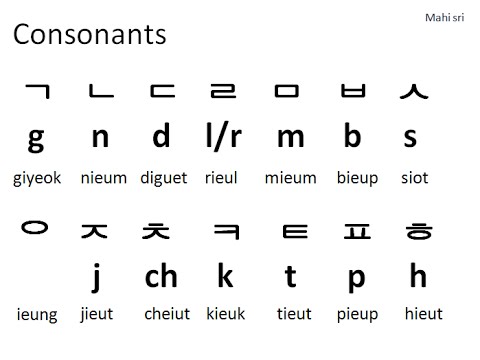
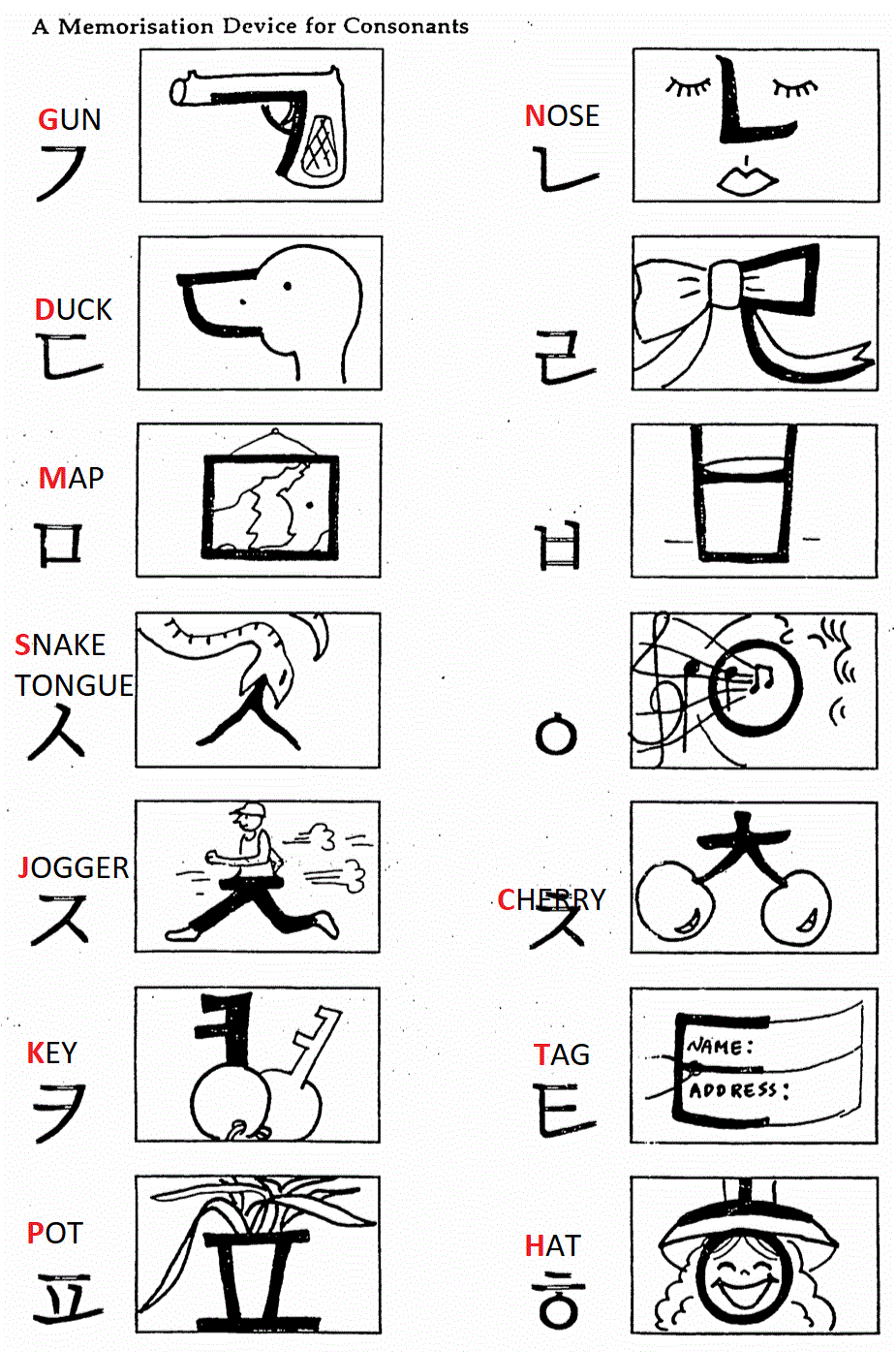
Vowels
There are two ways that a vowel can be combined with a consonant. The vowel can either be written to the right of the consonant or underneath it. All the vowels that are written to the right are based on a vertical line. The ones that are written underneath a consonant are based on a horizontal line.
Another good trick to remembering the pronunciation of a vowel is that if there are 2 additional lines to the "baseline" then it is "y" + the vowel if one line was taken away.
To the right

Underneath

Combinations
Once you know the vowels and consonants you can already make some words by combining them as seen below:
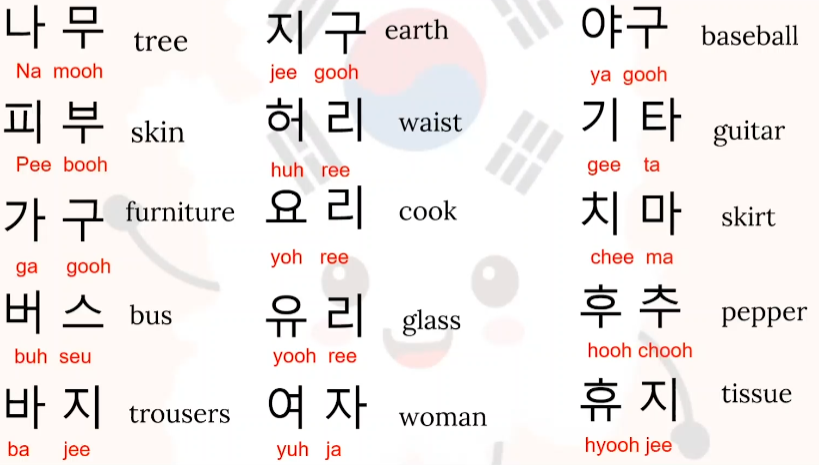
Double Consonants
Double consonants (in Korean "ssang ja-eum") only apply to 5 of the basic consonants. Double consonants are just the single consonants repeated next to each other. In korean "ssang" means "double" so for example "giyeok" becomes "ssang giyeok". The double consonants have different pronunciations from their singular counterparts with the main difference being that the double consonants have extra stress.
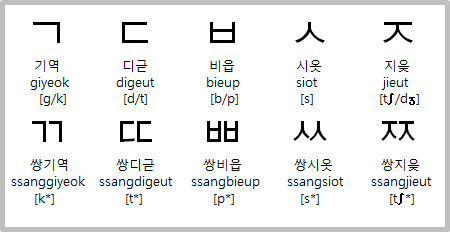
Complex/Compound Vowels
In Korean these are known as "diphthongs". Just like with the normal vowels we again have two groups, ones that are written to the right and ones that are written underneath the consonant.
The ones that are based on two vertical lines (ae, yae, eh, yeh) are written to the right, the others underneath the consonant. The ones that are written to the right are easy to remember as they just like the normal consonants have a base part, the two vertical lines and then you add horizontal lines. Here you can also use the same rule of if 2 horizontal lines are added then it starts with a "y".
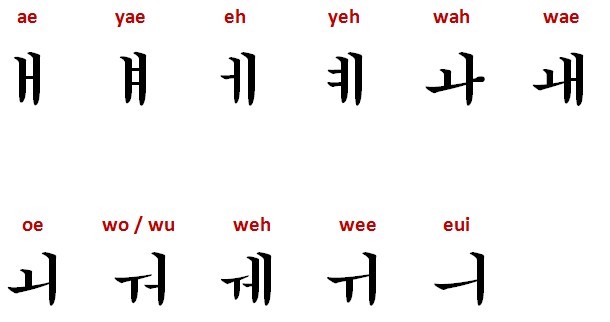
These can then again be combined to make words:

Basic Final/Ending Consonants
Also called in Korean "batchim". Is put simply another consonant under the syllable (consonant + vowel) all consonants can become final consonants apart from these:
- "dd", ssang digeut
- "jj", ssang jieut
- "bb", ssang bieup
